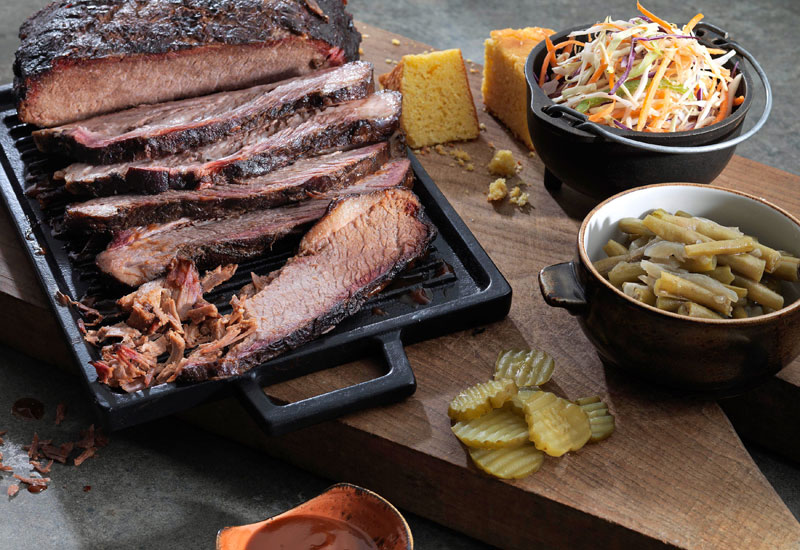“Meat and poultry have a large amount of waste, but at J&G we take a nose-to-tail approach where we try to utilise the whole animal,” says Daniel Ferreira, chef de cuisine, J&G Steakhouse, The St Regis Dubai. “Being in a hotel this also enables us to use different parts of the animal throughout the other outlets. Wastage control comes down to training, butchers and showing the junior chefs that there can be a use for everything,” asserts Ferreira.
“There is always going to be high levels of wastage on beef,” agrees Christopher Graham, group executive chef, FoodFund International. “You just need to be smart when writing menus to ensure that all possible edible trimmings can be used in other parts of the menu, for example, a nice pie, or a burger.
“I would love to follow a nose to tail approach here but the demand for the prime cuts in the UAE massively outweighs the demand for secondary cuts. I would love to be able to sell a slow cooked tongue, or shin, or even the marrow, and we try to introduce these at our restaurants, but it’s an ongoing process,” he continues.
At The Hide at Al Qasr, which serves dry-aged beef from Spain, head chef Brian Voelzing says they use secondary cuts like flank, flat iron and hanger “that are packed with flavour but not as popular as your beef fillet”.
“I’m a huge believer in nose-to-tail cooking. I think the whole animal should be used,” says Voelzing. “I don’t think the market for offal is overly popular in Dubai. We have tongue, cheek and oxtail on the menu, but we avoid cuts like heart and tripe as they aren’t overly popular.”
The “slow and low” smoking method used at Perry & Blackwelder’s, meanwhile, enables the chefs to use secondary cuts such as brisket, oyster blade, beef tri-tip and chuck rib, as the meat becomes increasingly tender the longer it is cooked, reveals group executive chef at JRG Dubai, Chris Lester.
Adequate training of new chefs in both sourcing and cooking is another issue that could impact wastage, says Graham.
“I don’t think enough is being taught in schools these days about the source of the ingredients we use. Everyone knows a fillet steak, but not all young chefs are taught about all of the different variables in the meat production that affect the end product. They need to be taught more about the feeds, the environment the cattle grow in, the ageing processes and the pros and cons of all these variables,” he says.
Reflecting on the media approach to issues related to livestock, Graham is both pragmatic and philosophical, most likely speaking for the majority when he says: “Personally, I think there are a lot more serious environmental issues that need to be addressed before we look at livestock. We are by nature carnivores and hunting and gathering has been a part of us since day one on this earth. When the population grows, the need for food does too. This is something we cannot escape, short of the world becoming vegetarians, and even then, crops still need water... and life without a good steak is a pretty miserable one.”
Quite right so, and with that in mind, here Caterer summarises the latest news in the GCC meat and poultry industry, and forecasts the meatiest trends for 2016.

| Advertisement |









 Search our database of more than 2,700 industry companies
Search our database of more than 2,700 industry companies









